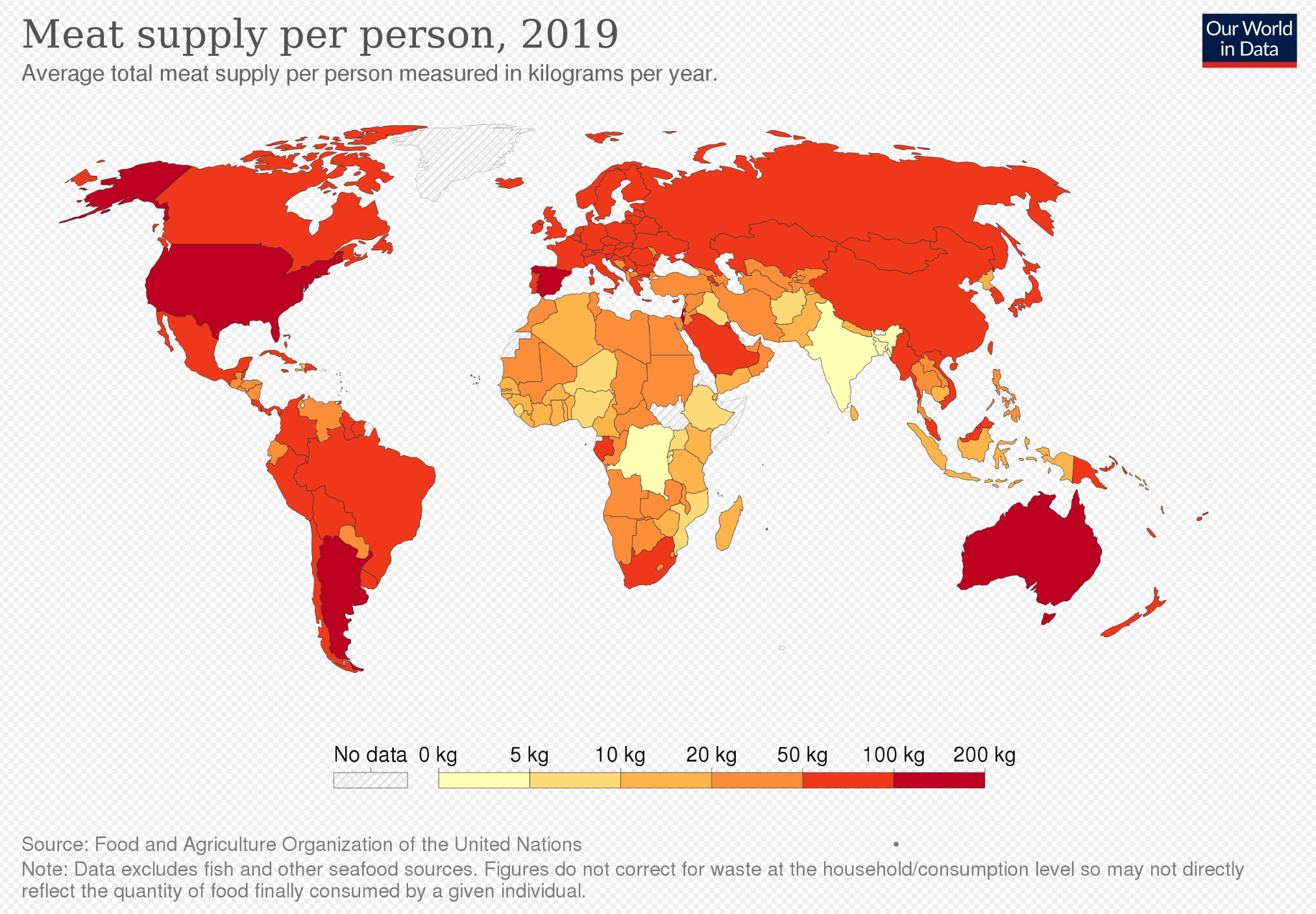Map Shows Countries with Highest Meat Consumption: A Focus on Hong Kong and the USA

Introduction
In the global landscape of dietary habits, meat consumption serves as a significant indicator of cultural preferences, economic status, and health implications. A recent analysis highlights a striking map that showcases the countries with the highest meat consumption per capita, with notable mentions of Hong Kong and the United States. Understanding these patterns is crucial not only for nutritionists and policymakers but also for consumers who are increasingly conscious of their dietary choices. This article delves into the meat consumption trends in these two regions, providing insights into the factors driving these behaviors, the nutritional implications, and the broader impact on health and the environment.
Understanding Meat Consumption Trends
H2: Global Meat Consumption Overview
Meat consumption varies widely across the globe, influenced by factors such as cultural norms, economic conditions, and agricultural practices. According to the Food and Agriculture Organization (FAO), global meat consumption has steadily increased over the past few decades, with projections indicating that this trend will continue.
- Key Statistics:
- In 2020, global meat consumption reached approximately 360 million tons.
- The average per capita meat consumption worldwide is about 43 kilograms per year.
H2: Meat Consumption in Hong Kong
H3: Current Trends
Hong Kong stands out with one of the highest per capita meat consumption rates globally. The city’s unique blend of Eastern and Western culinary influences has contributed to a diverse diet rich in various meats.
- Per Capita Consumption: In recent years, Hong Kong's per capita meat consumption has been reported at approximately 100 kilograms annually.
- Preferred Types of Meat: Pork, poultry, and beef dominate the diet, with pork being the most consumed meat, reflecting both cultural preferences and culinary practices.
H3: Factors Influencing Consumption
Several factors contribute to the high levels of meat consumption in Hong Kong:
- Cultural Significance: Meat plays a vital role in traditional Chinese cuisine, with dishes often centered around pork and poultry.
- Economic Prosperity: As one of the world’s leading financial hubs, Hong Kong enjoys a high standard of living, allowing residents to afford diverse meat options.
- Urban Lifestyle: The fast-paced urban lifestyle encourages the consumption of convenient and ready-to-eat meat products.
H2: Meat Consumption in the USA
H3: Current Trends
The United States has long been known for its high meat consumption, with a significant emphasis on beef, chicken, and pork.
- Per Capita Consumption: In 2021, the average American consumed about 125 kilograms of meat annually, making it one of the highest per capita rates in the world.
- Meat Types: Chicken has surpassed beef as the most consumed meat in the U.S., reflecting changing dietary preferences and health trends.
H3: Factors Influencing Consumption
Several aspects drive the high meat consumption rates in the USA:
- Agricultural Practices: The U.S. is one of the largest producers of meat globally, with advanced farming techniques and technologies that ensure a steady supply.
- Cultural Norms: Barbecues, fast food, and meat-centric dishes are deeply ingrained in American culture, promoting higher consumption rates.
- Marketing and Availability: The extensive marketing of meat products and their availability in grocery stores and restaurants further encourage consumption.
Comparative Analysis: Hong Kong vs. USA
H2: Nutritional Implications
Both Hong Kong and the USA face unique nutritional challenges associated with high meat consumption.
- Health Risks: Increased meat consumption has been linked to various health issues, including heart disease, obesity, and certain cancers.
- Balanced Diet Considerations: While meat is a source of protein, vitamins, and minerals, it’s important to balance meat intake with fruits, vegetables, and whole grains.
H2: Environmental Impact
High meat consumption also raises concerns about environmental sustainability.
- Greenhouse Gas Emissions: The livestock sector is responsible for a significant portion of global greenhouse gas emissions. Reducing meat consumption could mitigate climate change impacts.
- Resource Use: Meat production requires substantial land, water, and energy resources, raising questions about sustainability in food production.
Key Takeaways
- High Meat Consumption: Both Hong Kong and the USA exhibit high levels of meat consumption, with Hong Kong averaging around 100 kg and the USA about 125 kg per capita annually.
- Cultural and Economic Drivers: Both regions are influenced by cultural practices and economic factors that promote meat consumption.
- Health and Environmental Concerns: The implications of high meat consumption extend beyond personal health to broader environmental issues.
Conclusion
The map showcasing the countries with the highest meat consumption reveals significant trends, particularly in regions like Hong Kong and the USA. Understanding these trends is paramount for addressing health and environmental challenges associated with meat consumption. As global awareness of dietary impacts grows, both consumers and policymakers must consider strategies for promoting balanced diets and sustainable food practices. The future of food consumption may hinge on our ability to adapt our diets to be more health-conscious and environmentally friendly, paving the way for a healthier planet.
Call to Action
As consumers, it is essential to reflect on our dietary choices and consider incorporating more plant-based options into our meals. By doing so, we can contribute to a healthier lifestyle and a more sustainable future.